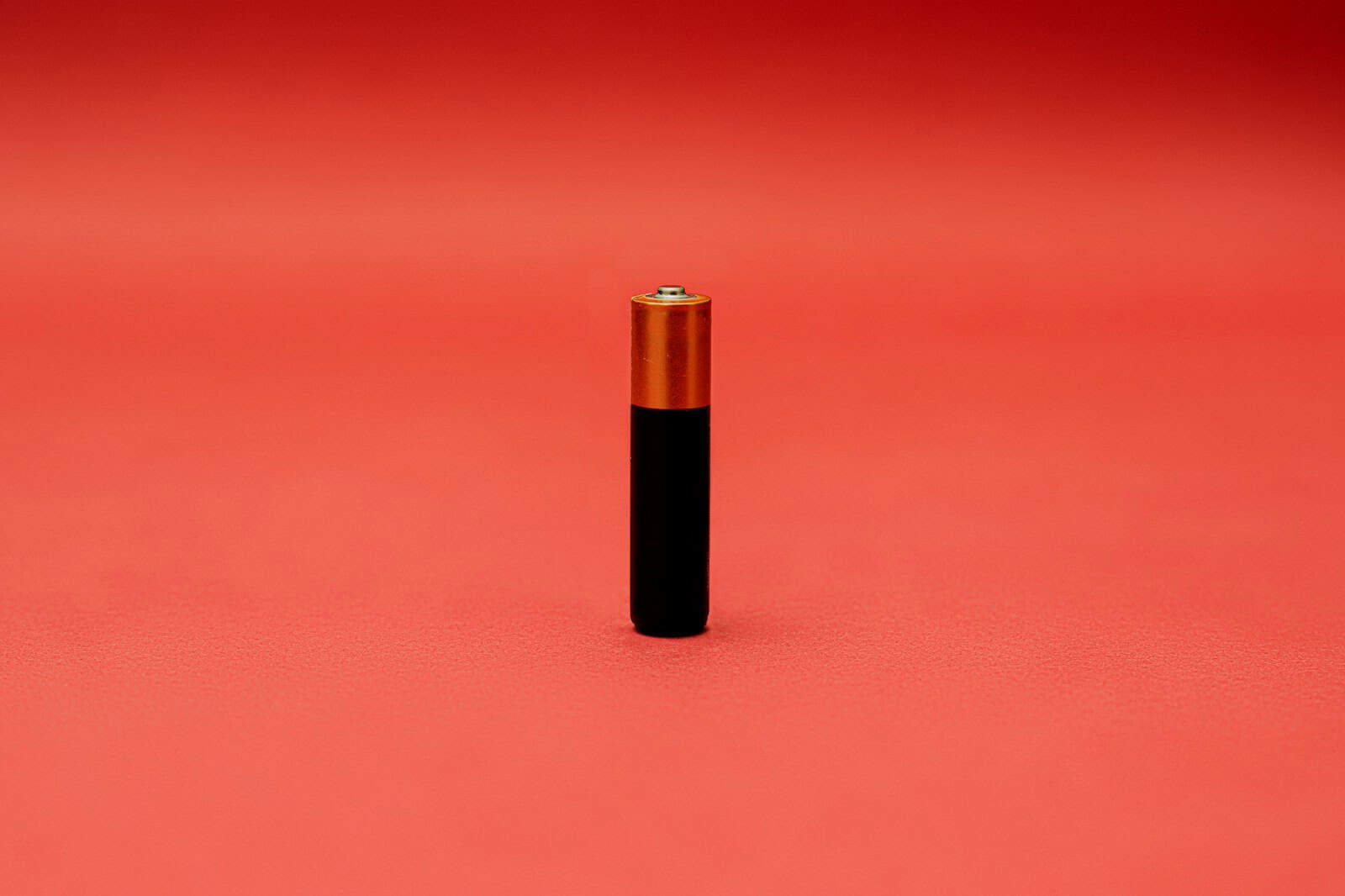
Rechargeable batteries power countless devices in our daily lives, from smartphones to electric vehicles. These energy storage powerhouses rely on reversible chemical reactions to store and release electricity on demand. Rechargeable batteries work by moving ions between two electrodes through an electrolyte, converting chemical energy to electrical energy during discharge and reversing the process during charging.
The key components of a rechargeable battery include a positive electrode (cathode), a negative electrode (anode), and an electrolyte. When the battery is connected to a device, ions flow from the anode to the cathode through the electrolyte, generating an electric current. This process can be reversed by applying an external power source, allowing the battery to be used multiple times.
Different types of rechargeable batteries exist, each with unique characteristics. Lithium-ion batteries, for example, offer high energy density and are commonly used in portable electronics. Nickel-metal hydride (NiMH) batteries provide a good balance of performance and cost for applications like digital cameras and power tools. Understanding these differences can help users choose the right battery for their specific needs.
Understanding Rechargeable Batteries
Rechargeable batteries are a modern marvel, powering everything from our smartphones and laptops to electric cars and power tools. But have you ever wondered how these batteries can be used over and over again? Let’s delve into the science behind rechargeable batteries and explore how they store and release energy.
The Basics of Batteries
All batteries, whether rechargeable or not, operate on the same fundamental principle: converting chemical energy into electrical energy. They achieve this through a chemical reaction that involves the movement of electrons between two electrodes—an anode and a cathode—within the battery.
What Makes Rechargeable Batteries Different?
The key difference with rechargeable batteries, also known as secondary batteries, is their ability to reverse the chemical reaction. When you charge a rechargeable battery, you’re essentially applying an external electrical current to force the electrons to flow back to their original positions, restoring the battery’s chemical potential energy.
Common Types of Rechargeable Batteries
There are several types of rechargeable batteries, each with its own chemistry and characteristics:
- Lithium-ion (Li-ion): Widely used in portable electronics due to their high energy density and lightweight design.
- Nickel-cadmium (NiCd): Older technology, known for its durability and ability to handle high discharge rates.
- Nickel-metal hydride (NiMH): Offers higher capacity than NiCd but can be less durable.
- Lead-acid: Commonly found in cars and other vehicles due to their low cost and ability to deliver high currents.
How Rechargeable Batteries Work
- Discharge: When you use a rechargeable battery (like in your phone), a chemical reaction occurs within the battery, causing electrons to flow from the anode to the cathode through an external circuit. This flow of electrons is what powers your device.
- Charge: When you plug your phone into a charger, an external electrical current is applied to the battery. This current reverses the chemical reaction, forcing the electrons to flow back from the cathode to the anode. This process restores the battery’s stored energy.
Key Concepts
- Electrodes: The anode (negative) and cathode (positive) are the two terminals of a battery where the chemical reactions occur.
- Electrolyte: A substance that allows ions to move between the electrodes, facilitating the chemical reaction.
- Separator: A porous material that prevents the anode and cathode from touching, which would cause a short circuit.
| Battery Type | Pros | Cons |
|---|---|---|
| Lithium-ion | High energy density, lightweight | Can be sensitive to high temperatures |
| Nickel-cadmium | Durable, high discharge rates | Contains toxic cadmium |
| Nickel-metal hydride | Higher capacity than NiCd | Can be less durable than NiCd |
| Lead-acid | Low cost, high currents | Heavy and bulky |
Rechargeable batteries are an essential part of our modern world, providing a convenient and sustainable way to power our devices. By understanding the basic principles behind their operation, we can appreciate the ingenuity of these energy storage marvels.
Key Takeaways
- Rechargeable batteries store and release energy through reversible chemical reactions
- Various types of rechargeable batteries exist, each suited for different applications
- Proper charging and maintenance can extend the lifespan of rechargeable batteries
Basics of Rechargeable Batteries
Rechargeable batteries store and release electrical energy through reversible chemical reactions. They consist of key components that work together in a cyclical process to power devices multiple times.
Components and Functionality
Rechargeable batteries have three main parts: two electrodes and an electrolyte. The anode is the negative electrode, while the cathode is positive. The electrolyte allows ions to move between electrodes.
During discharge, chemical reactions at the electrodes create a flow of electrons through an external circuit. This powers connected devices. Lithium-ion batteries use materials like graphite for the anode and metal oxides for the cathode.
Lead-acid batteries, common in cars, use lead and lead dioxide electrodes in sulfuric acid electrolyte. Nickel-cadmium (NiCd) batteries employ nickel hydroxide and cadmium electrodes.
Electrochemical Process
The electrochemical process in rechargeable batteries involves oxidation and reduction reactions. During discharge, the anode undergoes oxidation, releasing electrons. The cathode accepts these electrons in a reduction reaction.
When charging, an external power source reverses this process. Electrons flow back to the anode, restoring its chemical potential. This reversal allows the battery to be used again.
In lithium-ion batteries, lithium ions move from cathode to anode during charging. They return to the cathode when discharging. This ion movement, coupled with electron flow, enables the battery to store and release energy repeatedly.
Types and Applications
Rechargeable batteries come in various types, each with unique properties and applications. These batteries power a wide range of devices from small portable electronics to large electric vehicles.
Lithium-Based Batteries
Lithium-ion batteries dominate the rechargeable battery market. They offer high energy density, making them ideal for portable electronics and electric cars. These batteries don’t suffer from memory effect, allowing partial charges without capacity loss.
Lithium polymer batteries are a variant with a flexible, lightweight design. They’re common in ultra-thin devices like smartphones and tablets.
Lithium iron phosphate batteries provide excellent thermal stability and longer lifespans. They’re often used in power tools and electric bicycles.
Other Rechargeable Battery Technologies
Nickel-cadmium (NiCd) batteries were once widespread but are less common now due to environmental concerns. They still find use in power tools and emergency lighting due to their durability and ability to handle high discharge rates.
Nickel-metal hydride (NiMH) batteries offer higher energy density than NiCd. They’re used in digital cameras, portable gaming devices, and some hybrid cars.
Lead-acid batteries, the oldest rechargeable type, are still used in car starter batteries and uninterruptible power supplies. They’re low-cost but heavy and have lower energy density compared to newer technologies.
Charging and Discharging Cycles
Rechargeable batteries rely on reversible chemical reactions to store and release energy. These processes directly impact battery performance and longevity.
The Role of Charge and Discharge
Charging a rechargeable battery involves converting electrical energy into chemical energy. During this process, electrons flow from the cathode to the anode, increasing the battery’s chemical potential energy. The nominal voltage of a lithium-ion battery is 3.60V, reaching about 4.2V when fully charged.
Discharging occurs when the battery powers a device. Electrons move from the anode to the cathode, converting stored chemical energy back into electricity. A fully discharged lithium-ion battery typically has a voltage of around 3.0V.
One complete cycle consists of a full charge and discharge. Partial charges count as fractions of a cycle. For example, discharging to 50% and recharging to 100% equals half a cycle.
Memory Effect and Battery Maintenance
Modern rechargeable batteries, like lithium-ion, don’t suffer from the memory effect that plagued older nickel-based cells. This means they don’t need to be fully discharged before recharging.
To maximize battery life:
- Avoid frequent full discharges
- Keep the battery cool
- Store at about 40% charge if unused for long periods
Most rechargeable batteries last for 400-1200 cycles, depending on usage and care. Proper maintenance can significantly extend a battery’s lifespan and maintain its capacity over time.
Environmental and Economic Considerations
Rechargeable batteries offer significant environmental and economic advantages over disposable options. Their long-term cost savings and reduced waste make them an attractive choice for consumers and businesses alike.
Impact on the Environment
Rechargeable batteries help reduce waste in landfills. A single rechargeable battery can replace hundreds of disposable ones over its lifetime. This cuts down on the need for raw materials and energy used in manufacturing new batteries.
Charging these batteries does require electricity. The environmental impact depends on the power source. Renewable energy like solar or wind creates a greener charging process.
The production of rechargeable batteries involves some toxic materials. Proper recycling is crucial to minimize environmental harm. Many retailers and manufacturers offer battery recycling programs.
Rechargeable versus Disposable
Rechargeable batteries have a higher upfront cost but save money long-term. A set of quality rechargeables can pay for itself after 5-10 uses compared to disposables.
Disposable batteries are convenient but create more waste. They’re best for low-drain devices used infrequently.
Rechargeables work well in high-drain devices like digital cameras. They also suit items used daily, such as TV remotes.
The lifespan of rechargeable batteries varies. Some can last for 500-1000 charge cycles. This equals years of use in many applications.
Advances in technology are improving rechargeable battery performance. New types, like lithium-ion, offer longer life and faster charging times.
Frequently Asked Questions
Rechargeable batteries rely on reversible chemical reactions to store and release energy. These devices offer reusability but come with some trade-offs compared to disposable alternatives.
What is the mechanism behind charge retention in rechargeable batteries?
Rechargeable batteries store energy through reversible chemical reactions. When charged, the battery’s electrodes hold active materials in a high-energy state. During discharge, these materials return to a lower energy state, releasing electrons that flow through the device.
What are the chemical reactions involved in the operation of rechargeable batteries?
The specific reactions vary by battery type. Lithium-ion batteries move lithium ions between electrodes. Nickel-metal hydride batteries store hydrogen in a metal alloy. Lead-acid batteries convert lead and lead oxide to lead sulfate and back again.
What is the expected lifespan of rechargeable batteries?
Battery lifespan depends on the type and usage. Lithium-ion batteries typically last 2-3 years or 300-500 charge cycles. Nickel-metal hydride batteries may last 2-5 years. Proper care and charging habits can extend battery life.
What are the disadvantages of using rechargeable batteries?
Rechargeable batteries cost more upfront than disposables. They may have lower initial voltage and capacity. Some types suffer from memory effect, reducing capacity if not fully discharged. They also lose charge when not in use.
How is electricity generated within a rechargeable battery?
Batteries generate electricity through chemical reactions at the electrodes. As active materials change state, they release or absorb electrons. This electron flow creates an electric current that powers connected devices.
How does the recharge process work for rechargeable batteries?
Recharging reverses the discharging chemical reactions. An external power source pushes electrons back into the battery. This restores the active materials to their charged state, ready for the next use cycle.






